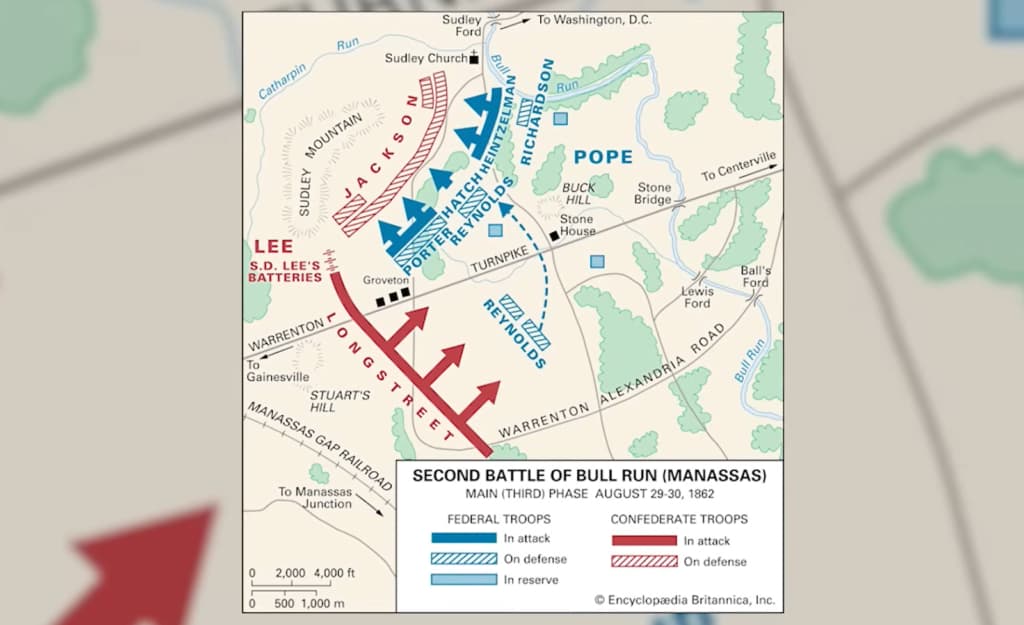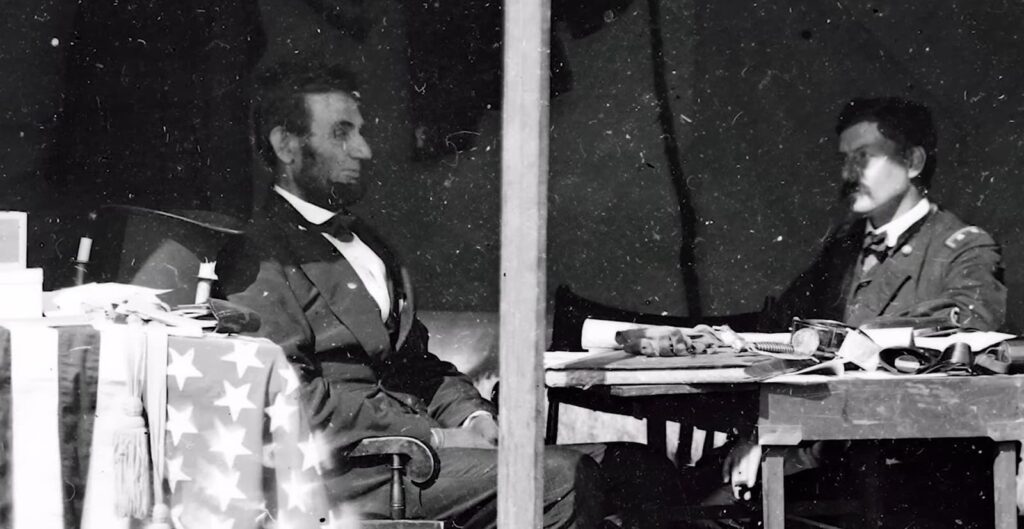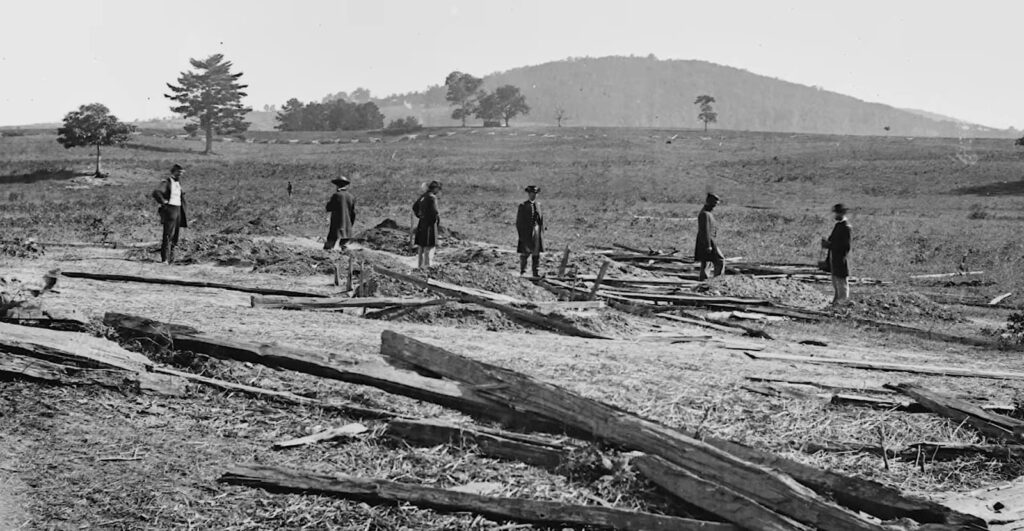The Prelude to Second Manassas
Spanning between August 28 and August 30, 1862, in the region of Northern Virginia, the Second Manassas, also known as the Second Battle of Bull Run, unfolded as one of the significant encounters during the American Civil War. Approximately 127,000 soldiers participated in the battle, tragically leading to almost 18,000 casualties, including nearly 3,000 deaths and 15,000 injuries. This crucial battle paved the way for Confederate General Robert E. Lee to gain momentum, initiating his Maryland Campaign. It also dealt a significant blow to the Union’s spirit, culminating in the dismissal of the Union’s Major General John Pope.
The Second Manassas, a pivotal battle of the American Civil War, played a significant role in shaping the history of Virginia, and exploring Civil War sites near Charlottesville, VA, allows us to delve deeper into this historical chapter. You may also like to uncover other compelling aspects of this era by visiting these nearby sites.
The Battle of Second Manassas

The Second Manassas was a decisive triumph for the Confederates. Despite facing a larger Union army, General Lee drove the Federal forces back to Bull Run. This strategic victory allowed the Confederate army to cross the Potomac River, marking the beginning of their first invasion of the North and setting the stage for the consequential battle of Antietam.
Prior to the battle, the Confederates’ alignment appeared shaky. While they had their fair share of victories, Union General Ulysses S. Grant kept them contained in the West. Additionally, General George B. McClellan had assembled the largest army ever seen in North America, directly threatening the Confederacy’s capital, Richmond. Despite the difficulties surrounding the Confederates, President Abraham Lincoln grew increasingly impatient with McClellan’s attempts, leading him to establish the Army of Virginia in June 1862 as a means of threatening Richmond’s rear. With McClellan’s Army of the Potomac immobilized, the Union forces tried to send reinforcements down the Shenandoah Valley to fortify their position further.
Amid these uncertain times, Lee was appointed to helm the Army of Northern Virginia. Lee immediately took action, successfully pushing McClellan back through the series of battles known as the Seven Days’ Battles. At the same time, however, the Union’s Army of Virginia, under the command of General John Pope, was stepping up its efforts. To counter this looming threat, Lee dispatched Stonewall Jackson westwards, who triumphed over one of Pope’s Corps at the battle of Cedar Mountain.
One of the defining moments in the battle involved Stonewall Jackson’s attack on Pope’s right flank, cutting off his supply line. The result was the seizure of the Union’s supply stores at Manassas Junction, and the Confederate forces enjoying the spoils before setting fire to the remaining supplies. Afterward, they stationed themselves near the site of the First Manassas battlefield.
On August 29, intense fighting erupted between Jackson’s forces and Union brigades at Brawner Farm, continuing into the night. Then, on August 30, Pope launched successive attacks on Jackson’s men, all of which were repelled. Pope, convinced that the Confederates were retreating, decided to chase after them. However, this decision was a grave mistake: Lee’s army was still in position and easily repelled Pope’s advance.
As momentum shifted in favor of the Confederates, Lee and Major General James Longstreet launched a massive counterattack, throwing the Union lines into chaos and forcing them to retreat. Although Union forces bravely resisted on Chinn Ridge and Henry Hill, by nightfall, they were forced to retreat towards Washington.
The Aftermath of the Battle
The Second Manassas marked a significant victory for Lee, bolstering the Confederates’ morale and readiness for their first Northern invasion. The battle took an enormous toll on both sides, with the Union forces suffering nearly 14,500 casualties and the Confederates over 7,000.
In the wake of the battle, Pope was dismissed from his command due to his humiliating defeat and perceived incompetent leadership. His dismissal led Brigadier General Alpheus Williams to remark, “More insolence, superciliousness, ignorance, and pretentiousness were never combined in one man.”
Significant Landmarks
Several notable landmarks and historical centers relate to the Second Battle of Manassas.
- These include the Brawner’s Farm Interpretive Center, which showcases exhibits and an electronic map of the battlefield, and the Deep Cut/The Unfinished Railway Trails, offering walking trails along the unfinished railways that played a pivotal role during the battle;
- Monuments erected in honor of the 5th and 10th New York Brigades and Chinn Ridge, where Union forces made their brave last stand before retreating, offer poignant reminders of the battle’s tragic consequences.
The Legacy of Second Manassas

The Second Battle of Manassas holds a significant place in Civil War history. Its outcomes highly impacted the Confederate’s morale and future tactics, clearly showcasing General Lee’s strategic prowess and resiliency. It also stands as a stark reminder of the heavy toll of war, with thousands of lives lost and even more wounded. The battle sites and monuments stand as silent witnesses, recounting the tale of the battle for generations to come.
Lessons Learned from the Battle
The Second Manassas battle offered clear insights into military strategy, leadership, and decision-making. The battle’s outcome underlined the significance of swift and decisive leadership, capable of adapting to changing circumstances. It also highlighted the importance of accurate intelligence and communication, as evidenced by the heavy losses resulting from Pope’s incorrect assumption about Confederate movements.
The Second Battle of Manassas was a defining moment in the American Civil War. It not only changed the course of the war by shifting the momentum in favor of the Confederates but also had a profound impact on the Union’s military leadership. From a consequential error in judgement to decisive strategic maneuvers, the battle underlines how crucial decisions can impact the course of history. As we remember the courage and sacrifice of those who fought, we also learn vital lessons about leadership, strategy, and the harsh realities of conflict.
Conclusion
In retrospect, the Second Manassas Battle was a pivotal event in the narrative of the American Civil War. The grand strategies and tactical maneuvers executed by General Robert E. Lee are still revered in military history. The battle outcomes profoundly affected the morale and course of both the Confederate and Union armies, and it left an indelible mark on the American psyche. The modern-day battlefield, standing as a haunting reminder of our past, inspires deep respect for the brave soldiers who fought there. Through immersive exhibits and walking trails, it offers visitors a chance to step back in time and relive the critical moments that shaped America’s history. It’s a profound testament to the resilience, courage, and strategic ingenuity that defined this period in American history.
